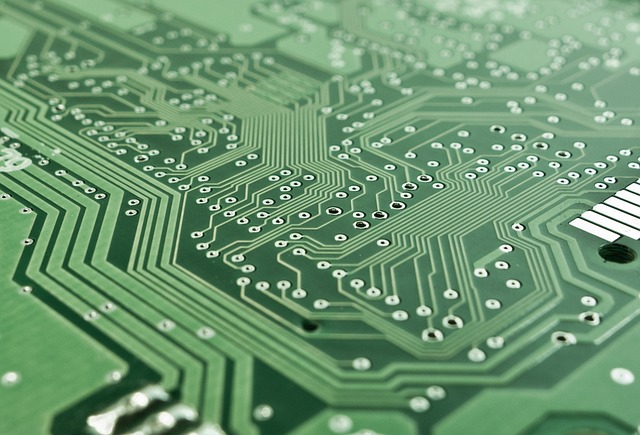As a laptop's battery ages, it typically exhibits decreased performance, with shorter battery life and longer charging times. Users should regularly monitor their battery's health using the built-in reports or external tools to detect early signs of degradation. Good maintenance practices can extend a battery's lifespan between two to six years, but eventual replacement will likely be necessary. To preserve battery health, avoid full discharges and perform calibration regularly. It's important to act when persistent issues such as unexpected shutdowns, inaccurate meter readings, physical distortion like swelling or bulging, erratic charging patterns, visual anomalies on the screen like flickering or lines during use, or consistent underperformance are observed. These are clear indicators that it's time for a replacement laptop battery to maintain functionality and prevent potential safety risks. Proactive measures not only ensure optimal performance but also safeguard against data loss and extend your laptop's operational life. Regularly checking the battery's health is essential, and replacing it with an authentic, high-quality battery from a trusted manufacturer is recommended when necessary. This proactive approach can save you from more significant issues and costs associated with battery failure.
When your laptop’s performance dips or its power button flashes unexpectedly, it may not just be software glitches at play—it could be a failing battery signaling its end. Recognizing the early signs of battery distress is crucial for maintaining your device’s efficiency and longevity. This article sheds light on the visible cues that indicate your laptop’s battery needs attention, from diminishing charge retention to unpredictable shutdowns. Understanding these warning signs can help you decide whether a replacement laptop battery is in order, ensuring your computing experience remains uninterrupted. Keep reading to learn how to diagnose and address battery-related issues effectively.
- Understanding Your Laptop Battery's Health: Key Indicators
- Diminished Battery Life: When to Worry About Your Laptop's Endurance
- Unusual Shutdowns and Restarts: Signs of Battery Stress
- Swelling or Bulging Battery Compartment: A Clear Warning
- Inconsistent Charging Patterns: What They Reveal About Your Battery
- Visual Anomalies on Screen During Operation: A Red Flag for Battery Issues
- The Decision Point: When to Replace Your Laptop Battery with a New One
Understanding Your Laptop Battery's Health: Key Indicators

When a laptop battery starts to decline in health, it’s crucial to recognize the signs early to prevent data loss or unexpected shutdowns. A well-maintained battery typically lasts between two and six years, depending on usage patterns and charging habits. However, as batteries age, their capacity to hold a charge diminishes. One of the most evident indicators is a reduction in battery life, where your laptop may not last as long on a single charge as it once did. Regularly checking the battery health report through your laptop’s system settings can provide insights into its current condition. Another significant sign is an increase in charging time without a corresponding increase in usable battery life. If your laptop requires longer periods to reach a full charge or doesn’t hold that charge as effectively, it may be a precursor to the need for a replacement laptop battery. Additionally, if you notice the laptop is shutting down unexpectedly or the battery charge meter is displaying inaccurate readings, these are further indicators of potential battery issues. It’s advisable to address these signs promptly, as continued use under these conditions could lead to irreversible damage. Regularly calibrating your battery and avoiding full depletion can help maintain its health, but eventually, it may be necessary to invest in a new replacement laptop battery to ensure optimal performance and longevity of your device.
Diminished Battery Life: When to Worry About Your Laptop's Endurance

As laptops age, one of the most noticeable signs of a failing battery is diminished battery life. Users may find their device no longer offers the same length of use between charges as it once did. If your laptop consistently fails to hold a charge for its advertised duration, or if you’re experiencing significantly reduced runtime after full charges, it could be a clear indication that the battery’s capacity is degrading. This decline in endurance doesn’t necessarily mean your battery needs immediate replacement but suggests it’s nearing the end of its lifecycle. Regularly monitoring battery performance through your laptop’s built-in settings or third-party applications can help you track this change over time. It’s advisable to consider a replacement laptop battery when such patterns are persistent, as continued use may lead to complete power loss and potential damage to the laptop’s components. Additionally, watch out for any unusual behavior like swelling, bulging, or excessive heat from the battery compartment, as these could signal safety concerns and require immediate attention. Proactively addressing a failing battery can prevent data loss and extend the overall lifespan of your laptop.
Unusual Shutdowns and Restarts: Signs of Battery Stress

When a laptop experiences frequent and unexpected shutdowns or restarts, it is often a sign that the battery is undergoing significant stress. This phenomenon, known as battery stress, can be attributed to aging cells within the battery that are losing their ability to hold a charge effectively. As the battery’s capacity diminishes, it may fail to deliver the power required by the system during peak usage, leading to these sudden interruptions. Users may notice that their laptop shuts down when performing resource-intensive tasks or after running for an extended period. This is a clear indication that the battery might need replacement soon. It’s advisable to monitor such occurrences and consider investing in a genuine replacement laptop battery from a reputable manufacturer to avoid data loss and ensure your device operates reliably. Additionally, keeping the laptop’s operating system and drivers up-to-date can sometimes resolve software-related issues that might mimic battery stress but are not related to the battery itself. Regular maintenance and understanding the typical behavior of your laptop’s battery will help you identify genuine signs of battery degradation and plan for a replacement in advance.
Swelling or Bulging Battery Compartment: A Clear Warning

When a laptop battery begins to fail, one of the most noticeable and concerning signs is the swelling or bulging of the battery compartment. This physical distortion is not merely an aesthetic issue; it indicates that the internal cells are compromised and can no longer safely store or release energy. The increased pressure from the swollen battery can cause ruptures or leaks, potentially leading to a fire or explosive hazard. It’s imperative to address this issue immediately by replacing the battery to prevent any damage to your laptop and to ensure your safety. If you notice this warning sign, avoid charging or using the device until the battery is replaced by a competent professional. A malfunctioning battery not only poses a risk but can also lead to inconsistent performance and unexpected shutdowns, further underscoring the need for a replacement laptop battery when faced with such physical changes. Regularly inspecting your laptop’s battery and replacing it with a reliable, high-quality unit from a reputable manufacturer is essential for maintaining the health and longevity of your device.
Inconsistent Charging Patterns: What They Reveal About Your Battery

When a laptop battery exhibits inconsistent charging patterns, it often signals that its lifespan is nearing its end. Users might notice that their device charges rapidly at certain times but slowly at others, or perhaps not at all despite being plugged in. This unpredictability can be attributed to the aging process of lithium-ion cells, which over time, lose their ability to hold a charge steadily. The battery’s management system might also struggle to communicate effectively with degraded cells, leading to irregular charging behaviors. If your laptop is consistently displaying uneven battery levels or requiring uncharacteristic charging times, it may be time to consider a replacement laptop battery. This not only optimizes your laptop’s performance but also ensures that you won’t find yourself in a situation where your battery suddenly drains, leaving you without power when needed. Regularly monitoring your battery’s health and replacing it before it completely fails can prevent data loss and the inconvenience of unexpected shutdowns, ensuring your computing experience remains smooth and reliable.
Visual Anomalies on Screen During Operation: A Red Flag for Battery Issues

When a laptop battery begins to fail, it can exhibit a range of visual anomalies on the screen that signal its diminishing capacity and health. One of the most apparent signs is distortion or flickering on the display when the device is under load or charging. This can manifest as lines or shapes appearing on the screen, particularly in the corners where the graphics processing takes place. These visual artifacts are often more pronounced during graphically intensive tasks or after the battery has been in use for an extended period. It’s advisable to monitor these occurrences, as they can become more frequent and noticeable over time. Such visual anomalies are a clear indication that it might be time to consider a replacement laptop battery. The integrity of the display should not be compromised solely by the battery’s condition; however, if changes in screen brightness or clarity accompany these visual glitches, it further points to the battery’s capacity issues. Regularly checking for such signs and addressing them promptly can prevent more serious malfunctions and data loss, ensuring your laptop remains reliable and functional. If you notice these warning signs, procuring a high-quality replacement laptop battery is often the best course of action to restore optimal performance and extend the life of your device.
The Decision Point: When to Replace Your Laptop Battery with a New One

When your laptop’s battery performance begins to wane, it’s a clear indicator that your device’s power source may be approaching its end of life. Typically, a healthy laptop battery should provide at least 80% of its advertised capacity after 300-500 charging cycles. If you notice your device no longer holds a charge as it once did, frequently requires recharging during routine use, or the battery meter drains faster than usual, these are significant warning signs that it’s time to consider a replacement laptop battery. It’s not just about inconvenience; a degrading battery can affect your laptop’s overall performance and may lead to unexpected shutdowns or data loss due to power interruptions. To avoid such situations, keep an eye on the battery’s health and monitor its performance closely. A consistent decline in battery life or persistent charging issues are clear decision points that signal the need for a new replacement laptop battery. Proactively addressing this issue will ensure your laptop operates efficiently, maintaining both functionality and longevity. Remember, it’s always more cost-effective to replace the battery before it fails completely rather than risking data loss or being stranded without a fully functional device.
Monitoring your laptop’s battery health is crucial for maintaining optimal performance. As detailed in this article, several indicators can signal a failing battery, including diminished battery life, unusual shutdowns or restarts, swelling or bulging in the battery compartment, inconsistent charging patterns, and visual anomalies on screen. If you’ve observed these signs, it may be time to consider a replacement laptop battery to prevent data loss and ensure your device operates smoothly. Regular checks and prompt replacement when necessary can save you from potential disruptions. Always opt for a reliable replacement laptop battery from a trusted manufacturer to ensure safety and longevity of your laptop.
